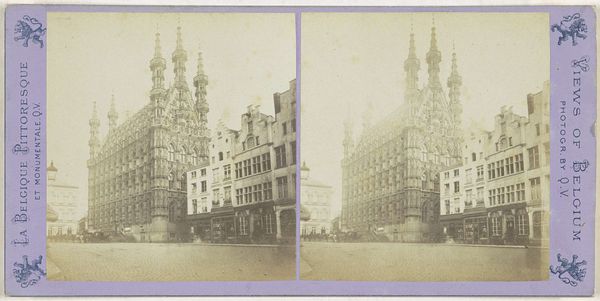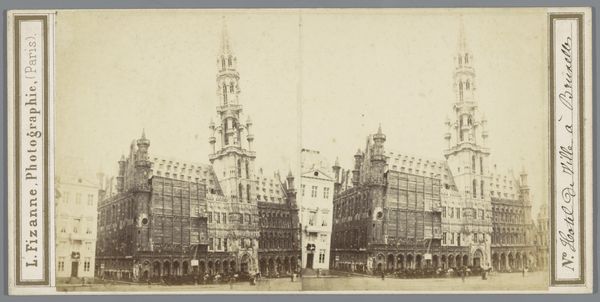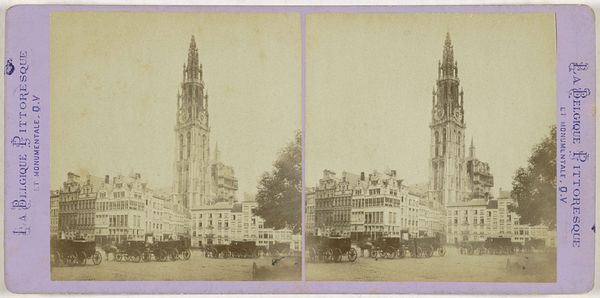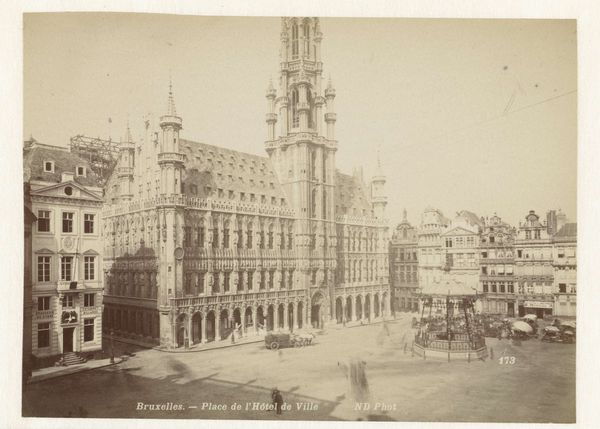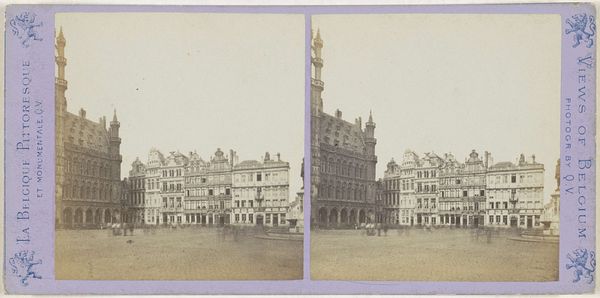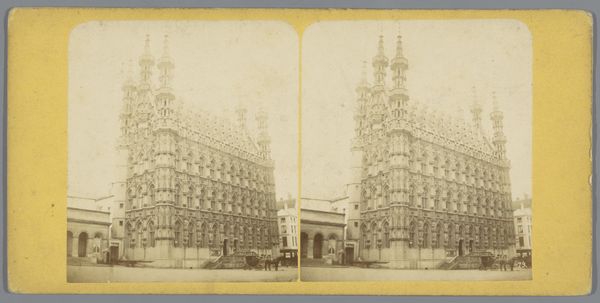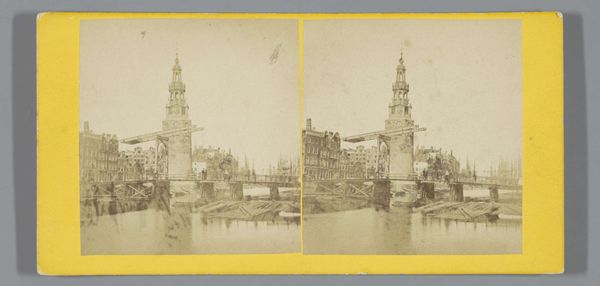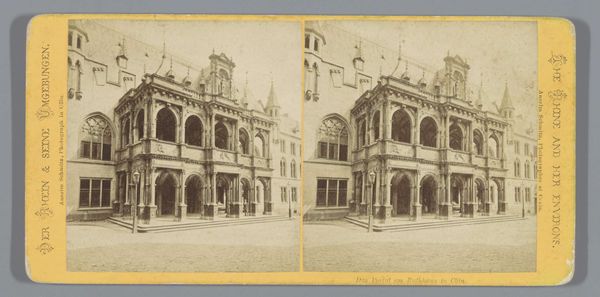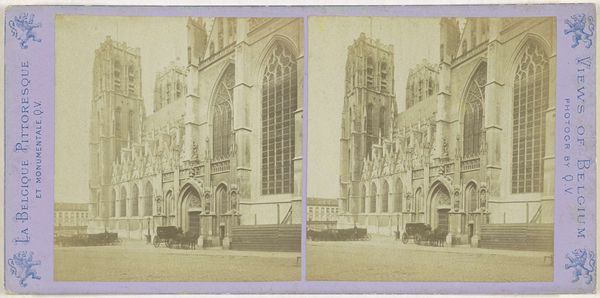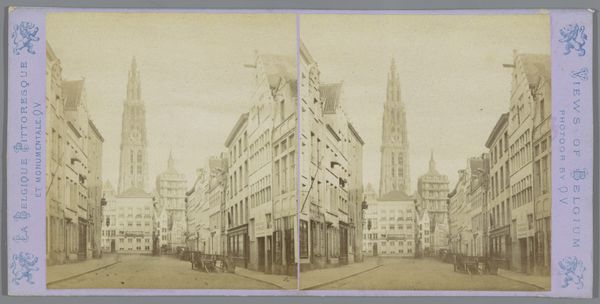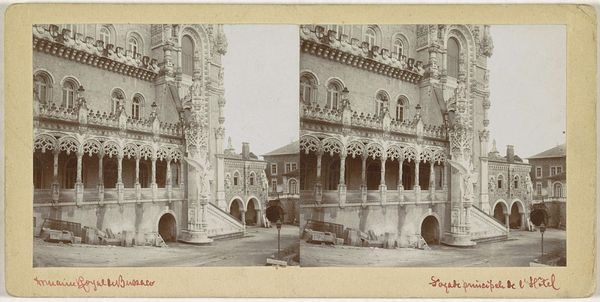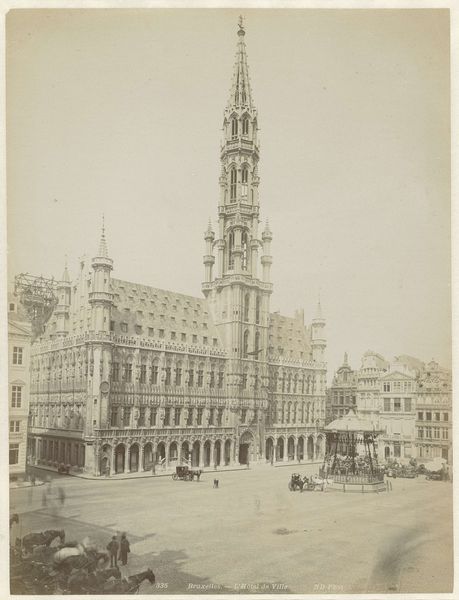
print, daguerreotype, photography, albumen-print
# print
#
daguerreotype
#
photography
#
cityscape
#
albumen-print
#
realism
Dimensions: height 86 mm, width 177 mm
Copyright: Rijks Museum: Open Domain
Curator: This albumen print, dating from 1866 to 1870, captures Jules Hippolyte Quévai's "View of the Town Hall in Brussels." It resides here at the Rijksmuseum. What strikes you most when you first see it? Editor: It’s so sepia-toned and intricately detailed; it feels almost like peering into a meticulously crafted diorama. There's this air of quiet grandeur. Curator: Yes, the choice of albumen print aligns with a mid-19th-century fascination with realism. How might that pursuit relate to Brussels as a site of burgeoning national identity at that time? Editor: Right. Think about it: photography provided this new level of "truth." The daguerreotype process was a very sharp depiction, although black and white, of this architectural marvel—the town hall standing tall like the concrete representation of the civic pride of the country. Do you get that vibe as well? Curator: Absolutely. And consider that the "Town Hall," specifically, served not merely as a location for bureaucratic procedures, but also functioned as a setting where socio-political and ideological beliefs converged and solidified a distinctly national story during this specific era. Editor: Which makes me think: it’s almost like Quévai wasn't just showing us the building, but sort of implying the entire identity and the very idea of "Belgium." In the context of Belgian nationalism it also makes you question: What kind of a person might get represented at all and by whom at that time? Curator: Indeed. What's captured and who gets to decide the representation, as always, requires further critical inspection in terms of race, gender, class. But let's maybe take that somewhere else and reflect, for a second, more intuitively, as we wrap this up. What final sentiment does it evoke for you? Editor: I see timelessness tinged with a delicate fragility. It reminds me that every grand narrative has so many other missing narratives—but I will not let the feeling of wonder leave so quickly, you know? It’s fascinating that so much history is captured in that single frame. Curator: Well said. It highlights, I think, the intersections of history, identity, and visual representation, leaving much for contemporary audiences to examine, decode, and re-contextualize.
Comments
No comments
Be the first to comment and join the conversation on the ultimate creative platform.

